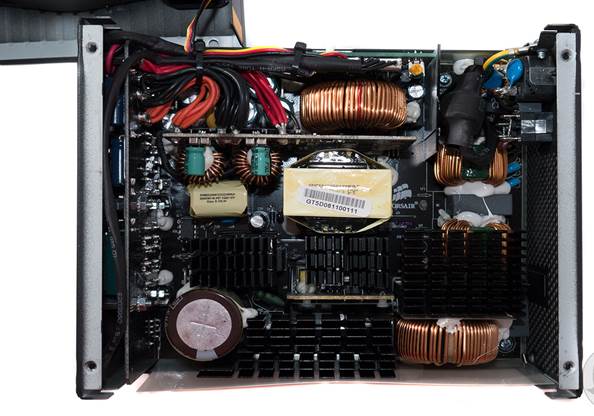Power Supply of the year: Corsair RM750
In the past PC PowerPlay has avoided
PSU reviews, as we lacked the expensive testing gear to do them justice.
However, after getting our mitts on a pricey load testing unit from China, we
were able to write the most comprehensive PSU test PC PowerPlay has ever done –
heck, we’d wager that nobody else in Australia has completed such detailed PSU
tests. After putting a dozen or so through their paces, the RM750 stood out as
the perfect PSU for the average PC gamer. Delivering stable, clean power at an
affordable price, it’s a solid foundation for overclocked and dual GPU systems.
Power users will probably find the Corsair AX1200i a better fit, but for most
users the RM750 is the one to buy.

Delivering
stable, clean power at an affordable price, it’s a solid foundation for
overclocked and dual GPU systems. Power users will probably find the Corsair
AX1200i a better fit, but for most users the RM750 is the one to buy.
CPU of the year: Intel 4th Gen Core I7-4770K
Intel wins CPU of the year by default,
as once again AMD failed to deliver a processor with compelling single threaded
performance. Until Mantle arrives to make the most of AMD’s octacore
processors, Intel’s quad core chip is the one to beat, and the 4770K is the
mainstream model of choice. Around 10% faster than the previous generation, it
ships with a factory Turbo speed of 3.9GHz. A quick dive into most motherboard
BIOS screens should easily lift this to 4.4GHz, providing a tasty 10% speed
increase free of charge. It does get a little warm at this frequency though, so
we’d advise going for a custom cooler if you plan to do so.

Intel
wins CPU of the year by default, as once again AMD failed to deliver a
processor with compelling single threaded performance.
Graphics Card of the year: ASUS GTX780TI-3GD5
After a year of high profile GPU
releases, we finally arrived at the pinnacle of polygon pummelling potential
with ASUS’ take on the NVIDIA GeForce GTX 780 Ti. This reference card uses
NVIDIA’s stunning aluminium cooler, which is sexy enough to make any owner
consider installing a Perspex window to show it off. What really makes this
product shine is its ability to deliver absolute best-in-class performance
without melting the inside of your case, with temps hovering around the 80C
range without breaking a sweat. It’s also whisper quiet under most workloads, a
far cry from the howling beast that is AMD’s R9 290X range of cards. Sure, it
costs around $150 more than AMD’s offerings for just a few more frames per
second, but most gamers would rather not have to deal with the sound of a
howling banshee while gaming.

After
a year of high profile GPU releases, we finally arrived at the pinnacle of
polygon pummelling potential with ASUS’ take on the NVIDIA GeForce GTX 780 Ti.